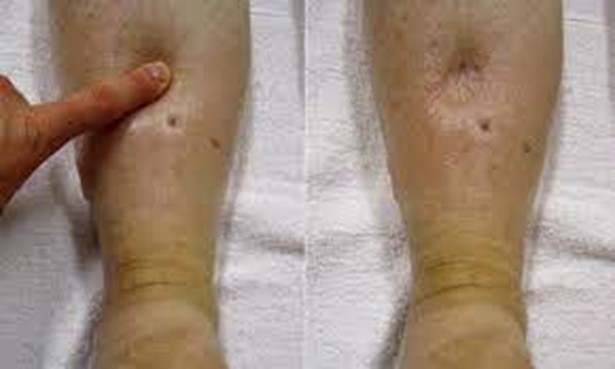A nurse is preparing to perform a wound irrigation for a client who has a stage 3 pressure injury. Which of the following supplies should the nurse plan to use?
A piston syringe.
Barrier ointment.
Chilled irrigation solution.
Sterile cotton balls.
The Correct Answer is A
Choice A rationale:
The correct answer. A piston syringe is used for wound irrigation to deliver a controlled and directed flow of fluid to clean the wound. It helps remove debris and promote healing. This choice aligns with wound irrigation best practices.
Choice B rationale:
Barrier ointment is not typically used for wound irrigation. Its purpose is to protect intact skin from moisture, friction, and other irritants, rather than to clean wounds.
Choice C rationale:
Chilled irrigation solution is not commonly used for wound irrigation. Room temperature or warm sterile saline is usually recommended for wound cleansing as cold solutions can cause discomfort and vasoconstriction.
Choice D rationale:
Sterile cotton balls are not used for wound irrigation. They may leave fibers in the wound, potentially leading to infection. Wound irrigation is usually performed using sterile syringes, solutions, and appropriate irrigation devices.
Nursing Test Bank
Naxlex Comprehensive Predictor Exams
Related Questions
Correct Answer is D
Explanation
The correct answer is choice D: "Provide mouth care to them at least every 2 hours."
Choice A rationale:
Encouraging meals at least three times daily is not appropriate for a client who is near death. As clients approach the end of life, their appetite often decreases, and they may be unable to tolerate regular meals. It's more important to focus on providing comfort and relief.
Choice B rationale:
Keeping the room warm to help them breathe easier is not necessarily true. While a comfortable room temperature can be important for the client's overall comfort, warmth alone does not significantly impact breathing in the context of impending death. Breathing difficulties at this stage are usually related to physiological changes rather than room temperature.
Choice C rationale:
Helping the client onto their left side if they are experiencing nausea is not a universally applicable instruction. While left-side positioning can help alleviate nausea for some clients, it might not be suitable for everyone. Nausea can be caused by various factors, and the caregiver should assess the client's comfort and preferences before changing their position.
Choice D rationale:
Providing mouth care to the client at least every 2 hours is the most appropriate instruction among the choices. Near the end of life, many clients become less able to maintain their oral hygiene due to various factors, including weakness and reduced consciousness. This can lead to discomfort and potential complications. Regular mouth care helps keep the client's mouth moist and clean, enhancing their overall comfort.
Correct Answer is C
Explanation
The correct answer is Choice C: 3+ pitting edema.
Choice A rationale:
1+ pitting edema refers to mild pitting edema. It is characterized by a slight indentation that disappears rapidly. A measurement of 6 mm edema is beyond the scope of 1+ pitting edema.
Choice B rationale:
2+ pitting edema indicates moderate pitting edema. It is characterized by a deeper indentation that takes a few seconds to rebound. While 6 mm edema might be associated with 2+ pitting edema, it is not the most accurate description.
Choice C rationale:
3+ pitting edema signifies moderately severe pitting edema. It is characterized by a noticeable indentation that remains for a short duration. A measurement of 6 mm edema aligns with 3+ pitting edema, making it the correct choice.

Choice D rationale:
4+ pitting edema represents severe pitting edema. It is characterized by a deep indentation that persists for a significant amount of time. 6 mm edema is not typically associated with 4+ pitting edema.
Whether you are a student looking to ace your exams or a practicing nurse seeking to enhance your expertise , our nursing education contents will empower you with the confidence and competence to make a difference in the lives of patients and become a respected leader in the healthcare field.
Visit Naxlex, invest in your future and unlock endless possibilities with our unparalleled nursing education contents today
Report Wrong Answer on the Current Question
Do you disagree with the answer? If yes, what is your expected answer? Explain.
Kindly be descriptive with the issue you are facing.
